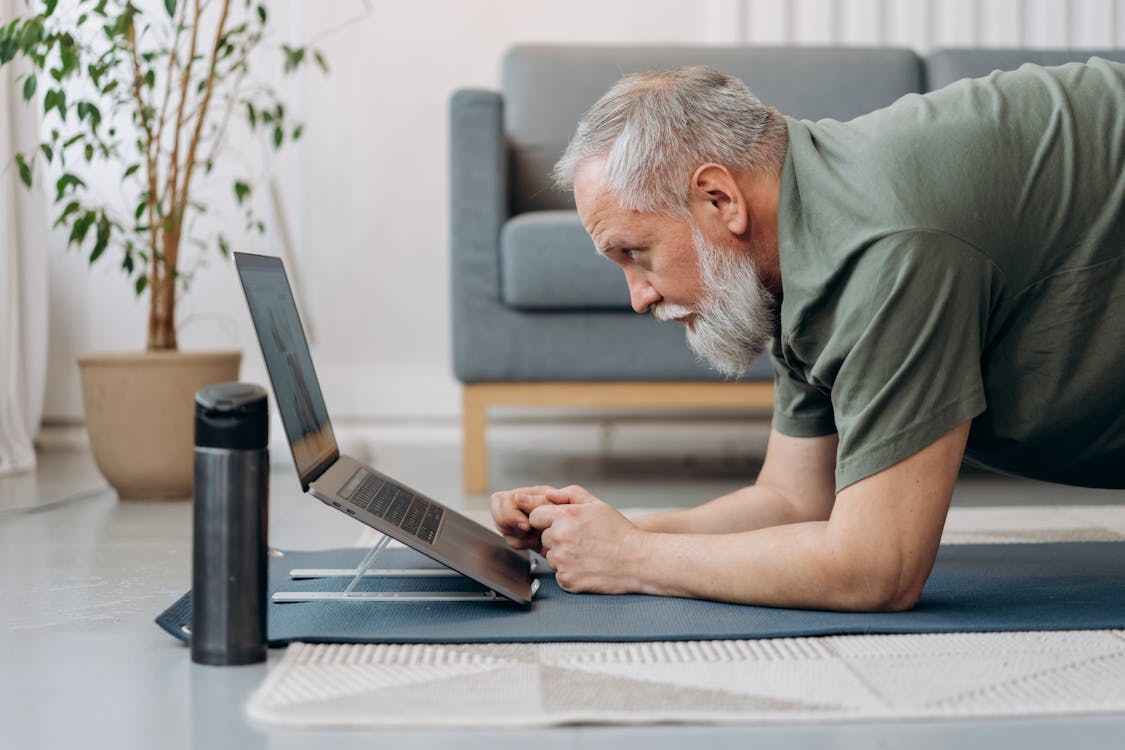
How To Keep Your Knees Safe In Yoga Class
The knee joint is a crucial piece of human anatomy that combines bones, cartilage and ligaments. It's the largest part of the human body and also considered to be the most complex- it allows people to crawl, kneel or sit in order to get comfortable (among other things).
Orthopedic surgery is becoming more and more common. By 2030, the amount of knee replacements alone will have increased by 673% (to 3.5 million cases per year)
In addition, knee pain is the second most common cause of chronic pain and more than 1 in 3 Americans report that they are affected by a knee related injury. The causes of knee pain can range from arthritis to dislocation due to sports injury and more doctors are advising people suffering it to try yoga as part of the healing process.
On the other hand, if you do not show proper care for your knees during a yoga session, you may aggravate any existing knee conditions and cause new damage. Use strong, healthy knees to protect your back. Whether you currently have pain in the knee or just want to stay ahead of the game, these simple exercises will help you stay strong and keep your knees happy too!
1. Tell Your Yoga Teacher and Choose Right Yoga
If you already suffer from knee pain, it can help to figure out which type of yoga practice is best for your body. You may want to consider a gentle and meditative style that doesn't require a lot of bouncing or twisting. This will reduce the strain on your tired joints. You should also take into account the teacher's educational background & training, as well as whether they have experience in yoga therapy, orthopedics or physical therapy.
Taking it easy with a slower pace and taking more time to get the technique right will help you focus on the key alignment issues. If you have issues with injuries, jumping and lotus-style changes may not be the best option for you. You may need to modifies some aspects of your yoga practice even if you don't do some postures
You should get in touch with your doctor before starting yoga and set limits accordingly. For example, you might need to be careful with the positions you choose when practicing yoga if you have suffered a recent surgery.
Yoga is an ancient practice with many benefits such as a lower risk of heart disease, fewer symptoms of depression and an overall sense of well-being. However, it's important to remember that there are certain yoga positions that may not be safe for everyone. Talk to your doctor before starting yoga, and set limits according to your needs.
2. Do Stretches Upto Safe Extent Only
Regardless of the state of our knees, we should all know what it feels like to stretch with the knee safe. A common rule of thumb for stretching is that the muscles above the knee joint feel good, while the sides or below it feel pulling.
So you're feeling a little stiff – if you're not careful, your muscles can tighten up and result in some serious pain. This is often the case when we go on long walks, climb stairs or even just sit down for a while.
A common example of a feeling in your knee that warns you about leaning back is the lotus pose. Before entering this pose, it's important to be sure that both knees are fully bent. The first bent leg can sometimes be moved completely into place, but the subsequent leg cannot. In this case, if you force the second leg into this position, it often causes knee damage, specifically the medial meniscus.
3. Your Yoga Teacher Can Do Simple Modifications
In addition to these general considerations, here are a few poses that may be modified to make it easier for you to bend your knees and hold them for longer times. Let your Yoga teacher know about any health conditions beforehand by telling them how you're feeling. If you have knee pain, these poses may be beneficial. Even if you don’t, it is important to work on strengthening your knees to avoid problems in the future.
I've heard many students praise the benefits of yoga and how it's helped their knee pain. But, you won't be able to experience those benefits when practicing in an unintelligent way which could actually make your knee pain worse. It's true that we take our knees for granted until they cause us pain. The following are some tactics to managing discomfort at work and taking preventative measures: Stretch when you have the chance, drink water, change positions regularly
Schedule Your Free Yoga Consultation Today!

Welcome to Navyoga! We are dedicated to helping you improve your wellness through a combination of traditional and modern yoga classes. Our classes provide an energizing experience that will leave you feeling refreshed and present. We offer group classes as well as private instruction tailored to the individual needs of our students. At Navyoga, we also offer yoga teacher trainings, creating next line of yoga gurus. Join us today—try one free class and see how Navyoga can help you find harmony within yourself and your surroundings!
Related Articles

How Physical & Mental Health Are Connected? And How Yoga Can Help?

3 Things You Can Do In A Yoga Class (And you thought you shouldn’t)

Importance of Silence in Yoga Class

